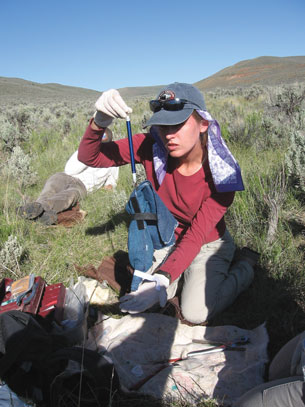Module 3 Intro
1. Module 3 Intro
1.32. Page 3
Module 3—Ecosystem Diversity
 Read
Read

© Mikaela/shutterstock
In Lesson 1 you practised observing leaves from two different locations. You were observing and taking measurements of a biotic component of the environment. By forming hypotheses, you speculated on the relationship between biotic components and abiotic characteristics of the ecosystem. If you had to measure abiotic characteristics of the environment, such as air temperature or depth of light penetration in a pond, what tools would you use? In this next Try This activity, you and/or your group will select the tools you will need for your field study.
 Try This
Try This
TR 3. Planning for Your Field Study: Part II
Procedure
Step 1: Research some of the abiotic components of the ecosystem you will be investigating (climate, sunlight hours, average precipitation). You may use Internet and print resources.
Step 2: Decide which three abiotic features of your ecosystem you will measure. Brainstorm the types of tools you will need to measure these abiotic features. How would you measure soil or air temperature? You may want to contact a field biologist at a local university or a forestry department office to find out what tools they use to conduct a field study.
Step 3: Decide what tools you will use to help you detect and identify organisms found in your field study.
Step 4: Decide how you will record what you see and what data you will obtain.
Analysis
Step 1: What is the difference between precision and accuracy? (Hint: Refer to “Appendix A” on page 748 of your textbook.)
Step 2: How do the tools you use to gather information about an ecosystem affect the accuracy or precision of your measurements? For example how does gathering information about soil moisture content from an Internet database or map compare with completing the measurements yourself?
Step 3: What are two advantages of each tool?
Step 4: What are two disadvantages of each tool?
Step 5: Is it precise enough to measure an abiotic factor at only one location in an ecosystem? Explain your answer.
Step 6: How will you obtain the tools you have selected? Which members of your team will be responsible for using the various tools?
In the Lesson 6 Assignment, you will be assessed on Step 2 of the procedure and the six Analysis questions. Save your responses to these questions in your course folder.